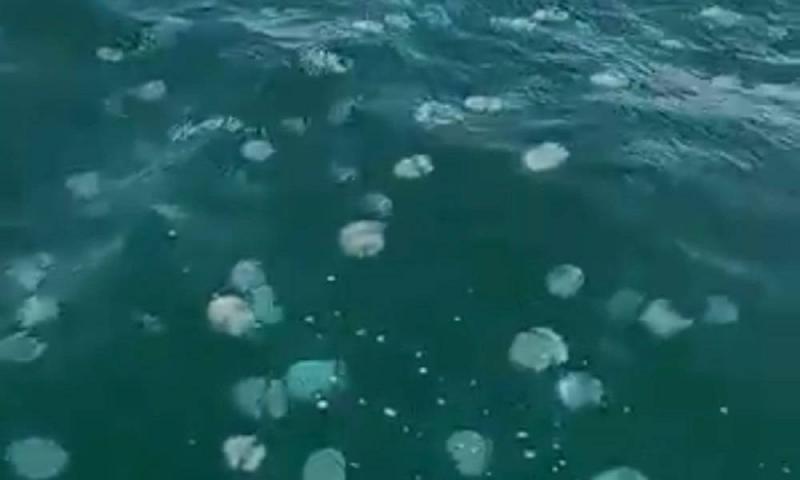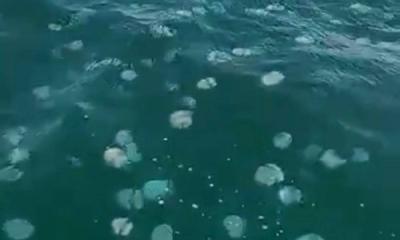Boris Aninski, a senior researcher in the Department of Animal Physiology and Biochemistry at the Southern Marine Biology Institute, announced that giant jellyfish are covering the western coast of the Crimean Peninsula. The scientist noted that this phenomenon may be due to strong winds and coastal water currents. He stated, "According to the reports, strong winds have swept large groups of giant jellyfish to the western coast of Crimea, especially near the Tarkhankut area. The strong northwestern winds and the circular coastal currents may be the reason for this. This huge number of giant jellyfish indicates that their population has significantly increased this year, but it could also be a specific case related to July's weather conditions."
According to him, the occurrence of giant jellyfish in such large numbers is rather an abnormal phenomenon linked to strong winds and currents, as they do not typically gather in schools. Moreover, jellyfish are usually more active during this period. He emphasized that the abnormal increase in the number of giant jellyfish in the Black Sea could be attributed to the high abundance of small plankton living in warm waters and the decreased numbers of Mnemiopsis leidyi, the main competitor of jellyfish.
It is noted that giant jellyfish inhabit the Black Sea, Azov Sea, Mediterranean Sea, and Adriatic Sea. They do not pose a significant danger to humans, but it is advised not to touch them or swim near these marine creatures, with the maximum diameter of a giant jellyfish's "domes" reaching 35-40 centimeters.




